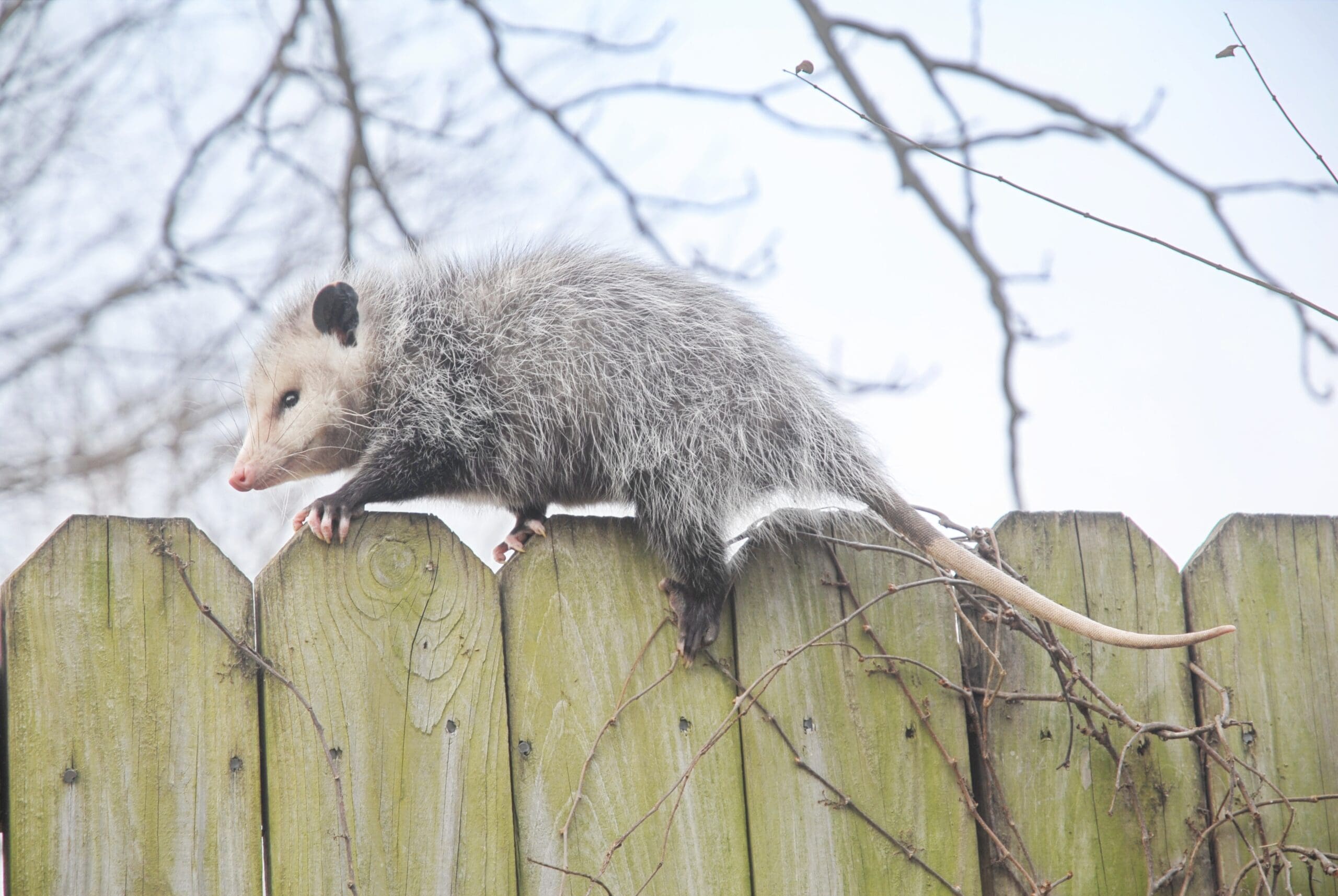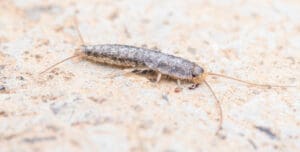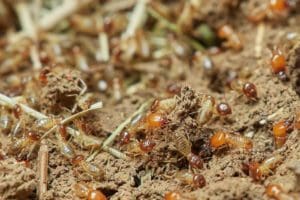

Minimizing Marsupials: A Guide To An Opossum-Free Property
October 2, 2023
Though their tendency to play dead when they are frightened gives them somewhat of a silly reputation, opossums can be quite scary. This guide is designed to help you keep opossums out of your home or business and off of your property completely.

Identification: How To Spot Opossums
Opossums are small to medium-sized marsupials found in North and South America. They are characterized by their distinctive appearance. Opossums have a rat-like, somewhat prehistoric look with a pointed snout and a long, scaly tail. Their tails are partially prehensile, which simply means they are able to use it to grasp or hold objects. Their fur varies in color but is commonly grayish or brownish with a coarse texture. One of their most remarkable features is their face, which typically has a pinkish, hairless nose and round, black eyes. Their ears are often hairless and prominent. Opossums have sharp, white teeth and can open their mouths widely to display them in a threatening manner. Opossums are known for their opposable thumbs on their hind feet, which help them grasp branches and objects. They have five fingers on each hand, making them adept climbers. Their prehensile tail assists in balancing when climbing and also serves as a tool for carrying materials. Overall, opossums have a unique and somewhat quirky appearance that sets them apart from many other mammals, making them easily recognizable to those familiar with these nocturnal creatures.What Attracts Opossums To Your Property?
Opossums are attracted to yards and gardens primarily by the availability of food and shelter. They are opportunistic omnivores and will scavenge for a wide range of food sources, including insects, small rodents, fruits, vegetables, pet food, and even garbage. Gardens with ripe fruits, vegetables, or compost piles can be particularly appealing. Additionally, opossums seek out sheltered spaces like burrows or dense vegetation for nesting and protection from predators. They are also drawn to areas with water sources nearby. Opossums are occasionally attracted to indoor spaces in search of shelter, warmth, or food. They may enter homes, garages, or sheds through open doors, windows, or gaps in walls. Once inside, they are drawn to food sources such as pet food, birdseed, or crumbs, and they may also seek out cozy, hidden areas for nesting or resting.Keeping Them Out: Tips For Indoor Opossum Prevention
Preventing opossums from entering buildings mainly involves sealing any entry points they may use to get inside. Inspect your building for gaps or openings in walls, roofs, and foundations. Use sturdy materials like hardware cloth or steel mesh to cover openings, paying special attention to vents, chimneys, and gaps under doors. In addition to closing off any entrances, opossums can be deterred using outdoor methods.
Protecting Your Garden: Tips For Outdoor Opossum Prevention
While closing entrances protects the insides of buildings, preventing opossums entirely requires a combination of outdoor methods as well:- Remove Food Sources: Opossums are scavengers, so secure trash cans with tight-fitting lids and place them in a secure area, such as a shed or garage. Avoid leaving pet food outside, and clean up fallen fruit, birdseed, and crumbs.
- Maintain Landscaping: Trim trees and shrubs away from the building to reduce the possibility of opossums using them as pathways to your home.
- Fencing: Install sturdy fences around your garden with the bottom extending below ground level, as opossums are capable diggers. Use electric fencing for added deterrence.
- Motion-Activated Lights and Sprinklers: Opossums are nocturnal; motion-activated lights or sprinklers can startle them when they approach, encouraging them to leave.
- Repellents: Use natural or commercial opossum repellents on garden plants and around the perimeter. These can include garlic, ammonia-soaked rags, or specific repellent products.
- Remove Hiding Places: Trim overgrown vegetation and remove clutter to reduce hiding spots in your yard.
- Remove Water Sources: Opossums need water, so fix leaks and remove standing water sources that might attract them.
- Scare Tactics: Hang aluminum foil, wind chimes, or Mylar balloons in the garden to create noise and movement that may deter opossums.
- Traps: If necessary, use live traps to capture opossums and release them at least five miles away from your property. Check local regulations regarding trapping and relocating wildlife.
Eliminating Invaders: What To Do When An Opossum Enters Your Home or Business
If an opossum enters your home, it's essential to remain calm and follow these steps:- Ensure Safety: Keep your distance from the opossum, as they are generally not aggressive but can bite if they feel threatened. Close off the area and prevent pets and children from interacting with it.
- Open Exits: If possible, open doors or windows leading outside to create an escape route for the opossum.
- Dim Lights: Dim the lights in the room to encourage the opossum to move towards the open exit.
- Wait Patiently: Give the opossum time to find its way out. Avoid making loud noises or sudden movements.
- Seek Professional Help: If the opossum doesn't leave or if you're uncomfortable handling the situation, contact a local wildlife control expert, animal control agency, or pest control professional for assistance in safely capturing and releasing the opossum back into the wild.






